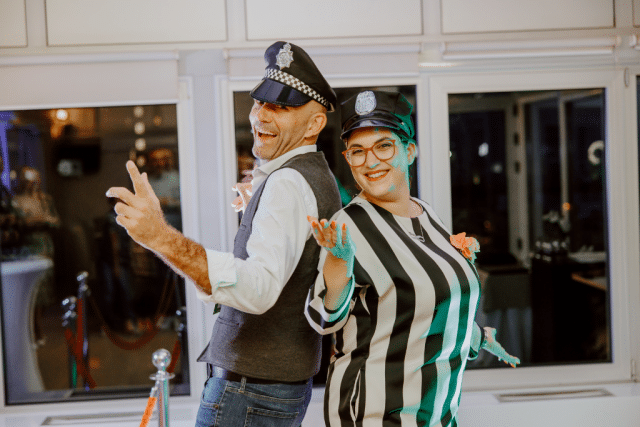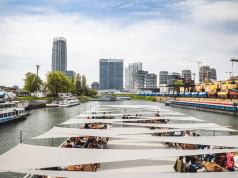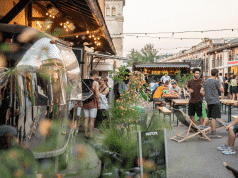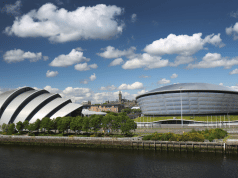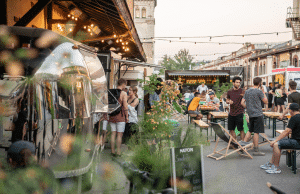Scene 1: Belgrade, 30 March 2024
The temperatures in the Serbian capital at the end of March have reached thirty degrees Celsius – time for summer attire. The promenade leading to the Belgrade Waterfront is jam-packed. Crowds of visitors flock to the soulless new architecture. What remains of the legendary Sava Mala, etched in my memory from decades ago, is a mere relic. The little that is left will soon fade. It seems everyone is in a rush, almost skedaddling to the gigantic shopping mall that lures them like a magnet. There, they swell in numbers and indulge in a shopping frenzy. I have seen my share of such promenades, collonades and palaces. What gives them away is their generic nature that can be seen and felt. Even Jamie Oliver’s outpost in Belgrade cannot beat the aftertaste reminiscent of fast food. A known restaurant hosts teenage influencers incredibly busy with algorithms, cherishing photos and capturing smiles more than excellent cuisine. The cigarette smoke that used to permeate a good “kafana” (authentic bar or pub) has been spirited away to other parts of the city, perhaps other parts of Serbia.
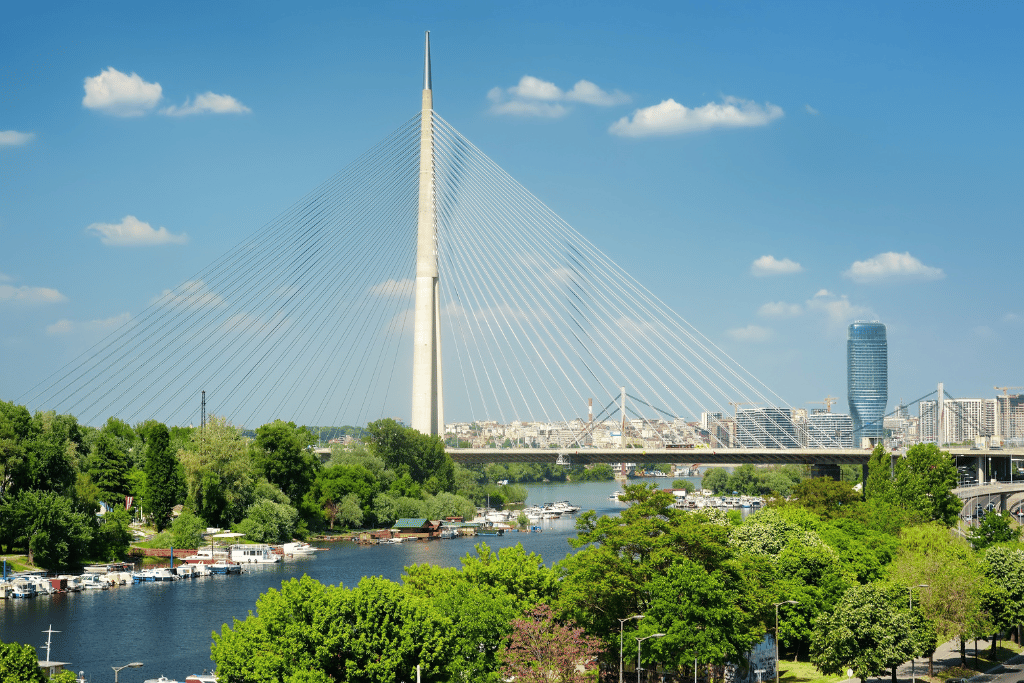
Scene 2: Niš, 29 March 2024
A day prior, the temperatures in Niš rose to a summery 27 degrees Celsius, thanks to our planet’s perpetual warming. Construction sites are aplenty in the third-largest Serbian city. The city is doubling down on its efforts to develop the Science & Technology Park Niš. The city park, adjoining the construction site where the new annexe of the technology park will grow, exudes youthfulness, summer carelessness and joy. Although there are no new Potemkin villages in Niš, a host of socialist (brutalist) blocks from the past century aptly replace them. Regardless if some see this architecture as an abundance or deficit, the city radiates unique energy in its rhythm, dubbed merak. The word merak captures the modus vivendi of Niš. It means the desire, will, pride and eagerness to enjoy small experiences and delights. Merak is the love for life, and the people of Niš undoubtedly adore their music, cuisine, human interactions and beloved “kafanas”. In my opinion, merak deserves a place on UNESCO’s list of Intangible Cultural Heritage. UNESCO should safeguard it as the last refuge of democracy and tolerance.
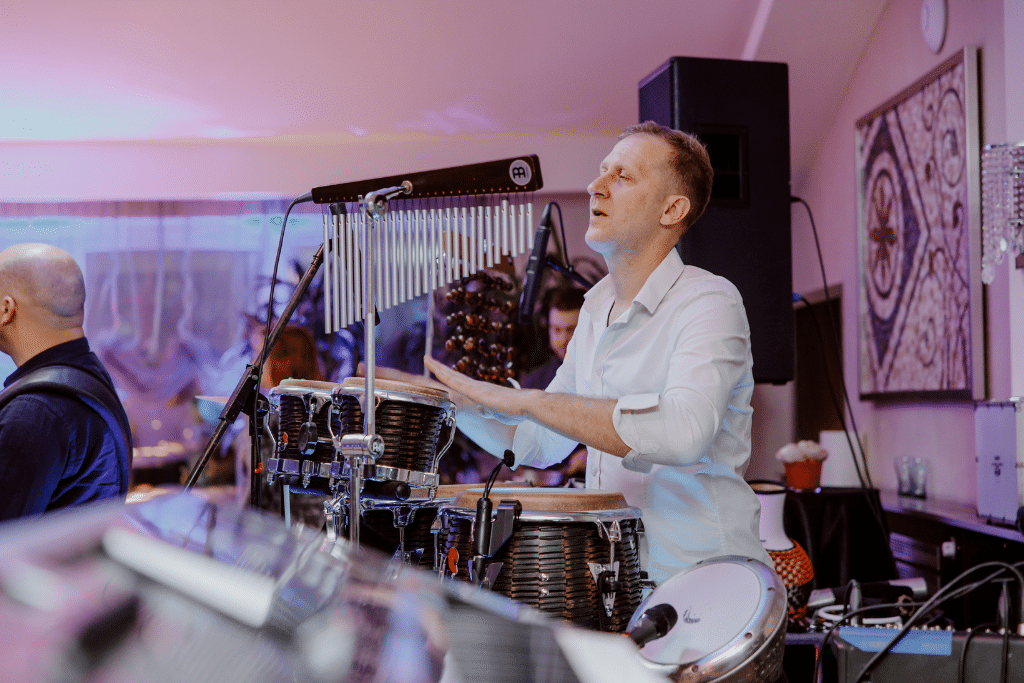
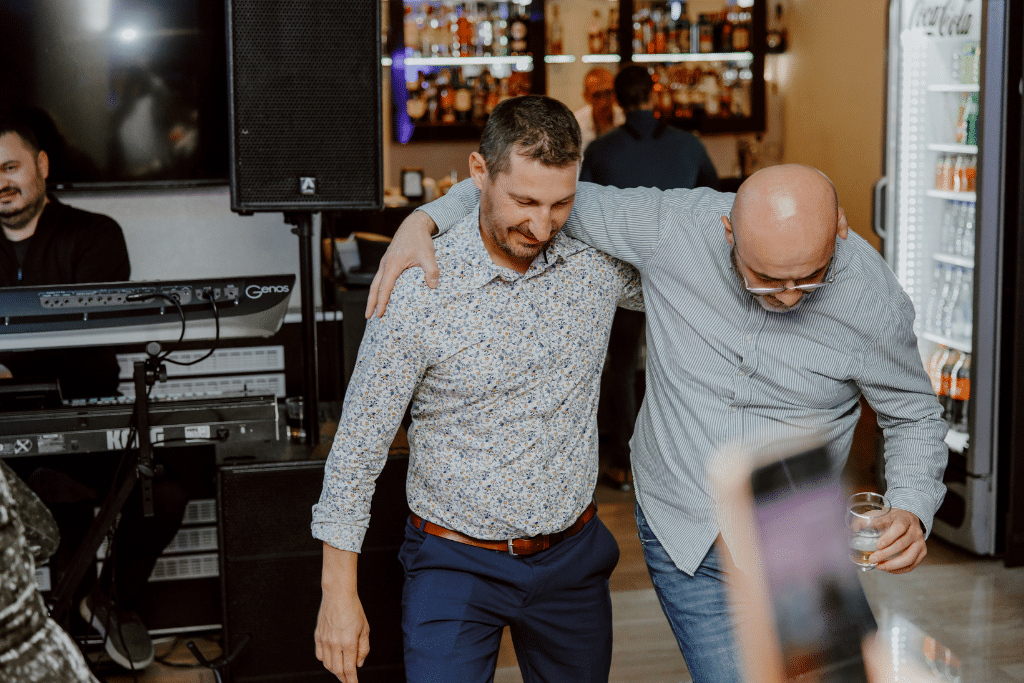
The perpetual search for authenticity
Event organisers have been pursuing authentic experiences for eternity. Authenticity, the holy grail of event organisation, glimmers with five stars in some countries. Authentic stories are hidden all around us, yet we fail to recognise them. Algorithms craft our priority list, unfortunately valuing an unkind, unprofessional and aloof waiter in a posh Belgrade riverside restaurant over a master cigarette-wielding barman in a smoky Niš bar. The latter serves drinks with a cigarette lit in the corner of his mouth that never seems to go out. After the official closing of the bar, he sits down with his guests and shows he is among the best, if rusty, Serbian tenorists. ChatGPT has no clue what merak is and probably never will. The AI tool will likely never understand nostalgia or the sentimental yearning for the past.
Authentic subcultures (alter authenticity)
Event organisers adore playing with authenticity. Often, we weave authenticity into events through space, culinary experiences, gamification, dramaturgy or as authentic experiences. We connect participants on a symbolic level and evoke pleasant feelings from the past. Authentic cuisine, genuine music, unique historical venues and cultural history are the core of every event, from incentives to huge congresses. Event organisers are responsible for giving participants a clear message, explaining whether the venues have a genuine historical background and story or if their stories are idealised and only summarise traditions and rituals within a micro-location. There are two types of authenticity:
– Objective authenticity includes everything authentic, real and original. Such forms of authenticity can be audited by experts or verified through certificates.
– Constructive authenticity is created and recreated for the needs of an event and could also be named symbolical authenticity. In the meetings industry, we often use the term aesthetic simulation.
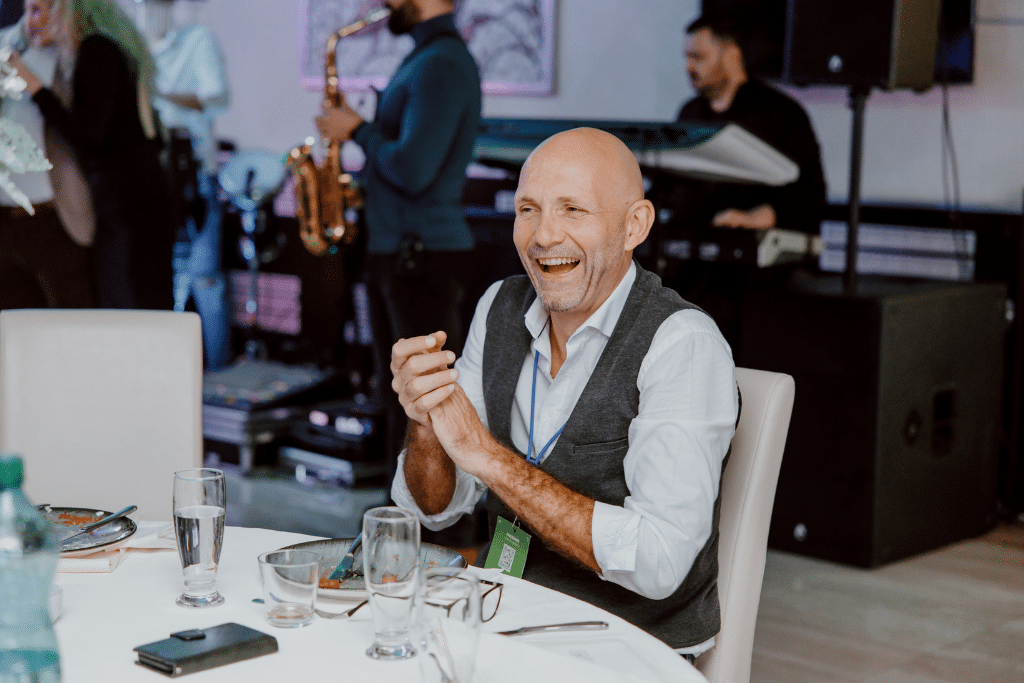
Don’t fake authenticity
Both types of authenticity are acceptable if event organisers design them professionally. Still, misleading attendees and visitors with fakes and a copy-paste approach is repugnant. Can you imagine Alpine musicians in Lederhosen performing in a Serbian kafana in Niš?
Unique meeting venues are a great added value to a destination. Sometimes, we do not see such venues because they have not been repurposed and designated as such. The bars and restaurants of Niš are a case in point. Destinations should create a list and pay homage to venues and their intangible cultural heritage. They should also be adept at finding authentic personas who will enthral participants with genuine stories and who grew up in the space where an event takes place.
Transcending time and space in Niš
The alienation of the modern digital world from traditional culture and the sense of being present is conflicting. Participants of your event will judge your interpretation of the past based on their perception. Reality and tangibility of what they see is thus a prerequisite for success. In Niš, authenticity is layered, starting with an unbelievable historical mix of Roman and Ottoman influences, cuisine, winemaking tradition, folklore, the music of Šaban Bajramović and the revered kafana. The latter is a form of wormhole that transcends time and space. Visiting a kafana is symbolically and emotionally a transformative experience. Your attendees will transform from passive audience members to active creators of the kafana experience.
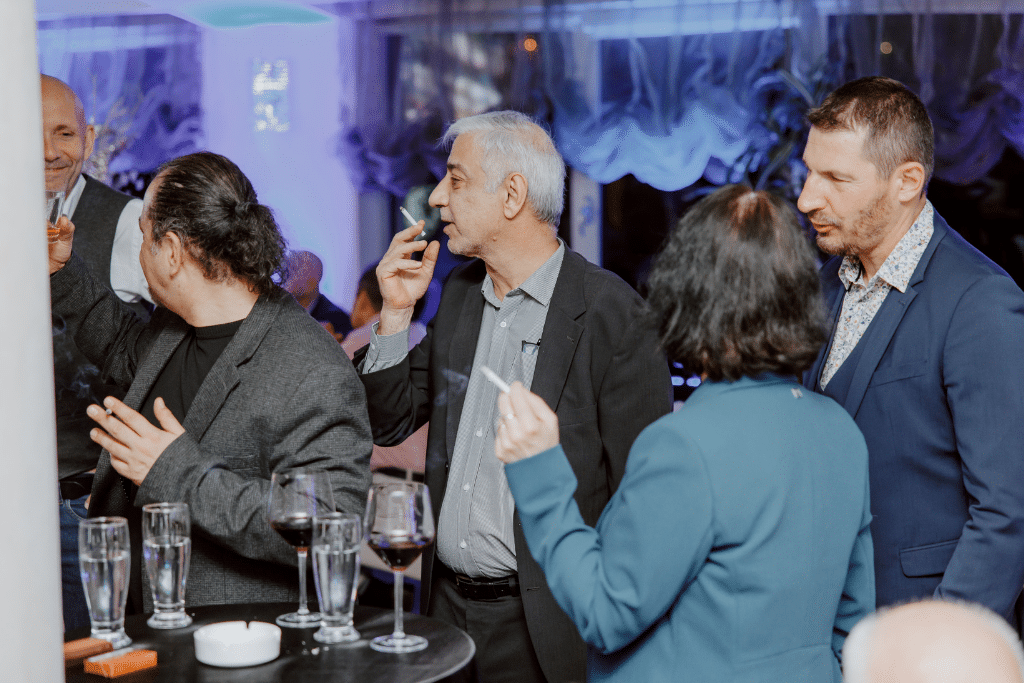
That is another reason they merit a place on UNESCO’s list of Intangible Cultural Heritage. The organisation’s Convention for the Safeguarding of Intangible Cultural Heritage (2003) defines intangible cultural heritage as the practices, representations, expressions, knowledge, and skills that communities, groups and, in some cases, individuals recognise as part of their cultural heritage. Kafanas belong to the category (c): social practices, rituals and festive events.
A colleague from Belgrade asked me provocatively why I exalt Niš when Belgrade is incomparably better, more important, modern and whatnot. I did not hesitate to reply that it must be merak and the city kafanas. Then, I sent him the following explanation:
The third largest Serbian city is overlooked as a MICE destination. You can find everything Belgrade offers in Niš but in a more authentic, hospitable and kind package. Niš is a metaphor for Southern Serbia, a city you will remember fondly. Niš will become fierce competition for Novi Sad and other regional destinations once accessibility improves and the construction of a new terminal at the airport concludes. The city’s geostrategic position between East and West played a visible role in developing the city. Still today, that is one of its greatest assets. The city must improve its marketing and connect its offer within the framework of the Niš Convention Bureau to become a recognised destination in the meetings industry. Niš is a promising destination that must use its potential to the maximum.
Written by Gorazd Čad


